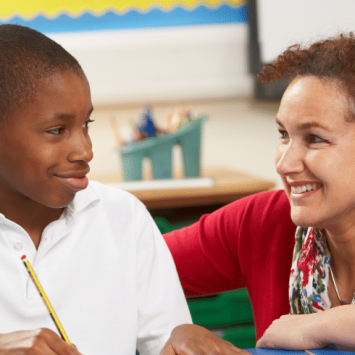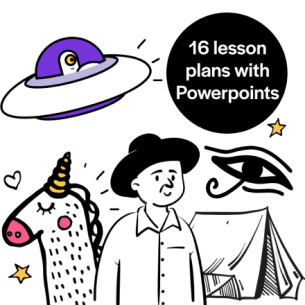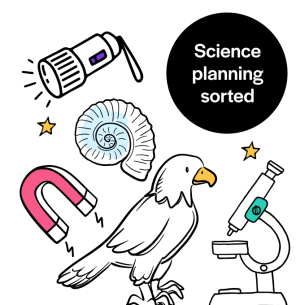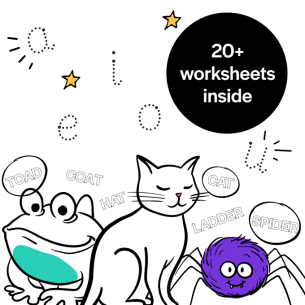This download contains:
- Design your own disc worksheet
- Practice game set-up instructions
- Student scorecard
- Ultimate Frisbee leapfrog exercise setup
- Ultimate Frisbee pitch set-up instructions
Ultimate frisbee is the perfect sport to get your students excited about physical education. Made official by UK Sport in 2008, it’s a mixed, non-contact team sport. The rules are simple and the set-up and tidying away is quick and easy.
Unlike some other sports, ultimate frisbee games don’t require a referee, so you can run multiple matches at once. The unique spirit of the game adds a fantastic cross-curricular PSHE dynamic to the activity.
Week 1
Learning objectives:
- Throw a backhand pass
- Perform a crocodile catch
Before you start the activity, explain that ultimate frisbee is a non-contact team sport and that the Frisbee is called a ‘disc’. Begin by modelling the following two essential skills:
Backhand pass: the thrower turns side on to the person they are throwing to (receiver). Hold the disc horizontally by the rim in front of your body. With a quick flick of the wrist, throw the disc to the receiver. In order to improve accuracy, encourage students to look at the receiver and aim for their chest. The ultimate goal is for the disc to travel through the air without wobbling. The faster it spins, the less it will wobble, allowing it to fly straighter and further. Encourage children to concentrate on the wrist flick. The faster the flick, the better the throw. This should improve over the course of your lessons as pupils condition the muscles in their forearm and wrist to this throwing motion.
Crocodile catch: the receiver stands facing the thrower, holds their arms out straight and snaps them together like the jaws of a crocodile to catch the disc, one hand on top and one underneath. This is a great beginner’s catch to teach your students.
Practise these two skills in pairs. A good beginner disc to use is the Aerobee Superdisc – it’s cheap, easy to use and durable. Ask pupils to stand about ten metres apart and throw the disc back and forth. Encourage them to concentrate on using the correct technique for the backhand pass and crocodile catch. Ask them to keep count and see how many catches they can get in a row without dropping the disc. Less able students can move a couple of steps closer to their partner, while more able pupils can take a few steps.
Drive children’s interest with the take-home ‘design your own disc’ activity sheet [resource 1]. They will love sharing their creative designs with their friends and family.
Assessment
For the backhand pass, look for a smooth flick of the wrist, eyes on the receiver and a smooth wobble-free flight through the air. For the crocodile catch, ensure students have extended arms and clamp their hands down on the disc simultaneously.
Week 2
Learning objectives:
- Throw an advanced backhand pass
Explain that today, children will be further developing their throwing and catching skills by learning some advanced techniques. Model the following key skill:
Advanced backhand pass: the thrower stands side on to the receiver, grips the rim of the disc, draws their arm back across their body, bends their elbow then swings their arm with a quick flick of the wrist on release.
Split the children into groups of three or four, with one disc per student. Set up the game space as per the diagram in resource 2 and give each student a scorecard [resource 3] and pencil. Pupils must make their first throw from the tee in the direction of the end zone and record each throw as a tally on their scorecard. The aim is to land your disc within the end zone. Once the round has commenced, the child furthest from the end zone throws. Play continues until everyone has landed their disc in the end zone. The group can then proceed to the next tee once any previous groups have finished.
Differentiate this activity by encouraging less able students to gradually bring their arm further back as they grow more confident with the throw, concentrating on a firm flick of the wrist. Encourage more able pupils to step forward with the throw and follow through with their arm after they release the disc.
Assessment
For the advanced backhand pass, look for a smooth throwing action with the arm fully extended, aided by a quick flick of the wrist.
Week 3
Learning objectives:
- Learn the principles of marking
- Perform a pivot turn
Begin this lesson by explaining that you are going to be practising the ultimate frisbee skills of marking and the pivot turn. Model these two skills as follows before commencing the activity:
Marking: when the other team has the disc in ultimate frisbee, a marker can stand next to the thrower and use their arms to block the pass. Make it clear that under no circumstances can the marker touch the thrower or take the disc from them.
Pivot turn: the thrower can pivot to give themselves more room to pass. To do this, keep one foot planted on the ground and step away from the marker with the other foot. You can perform a pivot turn several times if necessary, prior to passing the disc.
Split pupils into groups of seven, with one disc between them. This is the ideal group size as this is how many players constitute an ultimate frisbee team. Nominate one player in the group to be the marker. The other players must pass the disc between them. If the disc touches the ground or if the marker catches it, the last thrower becomes the marker. In ultimate frisbee, the person who threw the disc becomes the marker, regardless of who else touched it before it hit the ground. Encourage throwers to take their time – new players can sometimes rush their passes which can lead to misthrows. Because ultimate frisbee is played without an umpire, the onus is on players to take responsibility for their mistakes. Encourage the marker to stand an arm’s length away from less able pupils. For a group of more able students, introduce two markers and two discs.
Assessment
For marking, look for energetic use of arms to block the pass, while strictly avoiding contact with the thrower. For the pivot turn, look for a long step away from the marker while keeping the pivot foot fixed in place.
Week 4
Learning objectives:
- Learn to fake a throw
Explain that in this lesson, you are going to learn to fake throws to confuse and distract the marker. Very soon, children will be playing their first game of ultimate frisbee.
Split the children into pairs, with one disc between them. Ask them to stand ten metres apart and pass the disc back and forth. Before each throw, they should to pretend to throw the disc, without actually releasing it. This is called a ‘fake’. Encourage children to quickly follow the fake pass with a real one. Let less able students stand closer together and set an achievable target for consecutive passes, such as five in a row. Ask more able students to take a step back after each successful catch, or a step forward for each miss.
Next, split the children into groups of three, with one disc between them. Follow the directions on the leapfrog set-up resource [resource 4]. This will give students the opportunity to practise passing to a moving player, an essential skill in the game of ultimate frisbee.
Assessment
Look for a fake throw followed quickly by a real one.
Week 5
Learning objectives:
- Throw a curve pass
- Understand the ‘spirit of the game’ principle
Explain that today you will learn to throw a curve pass and will also learn about the ‘spirit of the game’ principle that encourages fair play and good sportsmanship. Start by modelling a curve pass as follows:
Curve pass: stand side on to the receiver and perform a backhand pass. To curve the pass right, tilt the disc slightly to the right. Conversely, to curve it left, tilt the disc slightly to the left.
Split children into groups of three, with one disc between them. Ask them to stand in a triangle and throw curve passes to each other. Encourage throwers to aim slightly to the side of the receiver to cater for the curve of the disc through the air. Encourage children to say the name of the receiver to emphasise the importance of communication in ultimate frisbee. Less able pupils can keep the disc nearly horizontal to minimise the amount of curve in flight, while more able students can add extra tilt and practise catering for this added movement through the air by aiming further from the receiver.
‘Spirit of the game’ is a central principle of ultimate frisbee. At the end of each game, all players form a circle and say something positive or encouraging about another participant. At the end of the curve pass activity, encourage each group to form a circle and say something positive about another player. As a class, join together in one big circle and ask pupils to share a positive thought about another person there.
Assessment
For the curve pass, look for a smooth tilted action resulting in an arc through the air. Listen for thoughtful remarks that demonstrate an understanding of the importance of the ‘spirit of the game’ principle.
Week 6
Learning objectives:
- Energetically participate in a game of ultimate frisbee
- Demonstrate competence in the keys skills of the game
Lay out as many game spaces as necessary for your class size, according to the instructions in resource 5. Adapt the dimensions if necessary to suit the area you have available. Divide the children into groups of seven and distinguish the teams by handing out coloured bibs or sashes. Flip a disc to decide which team throws first. Explain that both teams start roughly 20m from their end zone and play begins with one team throwing the disc to the other. This is called a ‘pull’.
Commence play and encourage players to use the skills they have practised over the last few weeks to pass and catch the disc. If the disc goes out of bounds or is dropped, the nearest player from the other team becomes the thrower. A point is scored if the disc is caught in the end zone. After a score, the team that conceded the point should ‘pull’ the disc to the other team to resume play.
End the game by standing in a large circle. Encourage children to reflect on the skills, teamwork and sportsmanship of the opposition team.
Assessment
During the game, look for good backhand pass, crocodile catch, marking, pivot turn, fake throw and curve pass techniques. After the match, look out for further positive contributions that foster teamwork and good sportsmanship. TP
Nick East is a Twinkl content writer, primary teacher and editor of a games-based learning website. Originally from Australia, he is now based in Frome, Somerset. Find him on his website at mrfunology.com.













